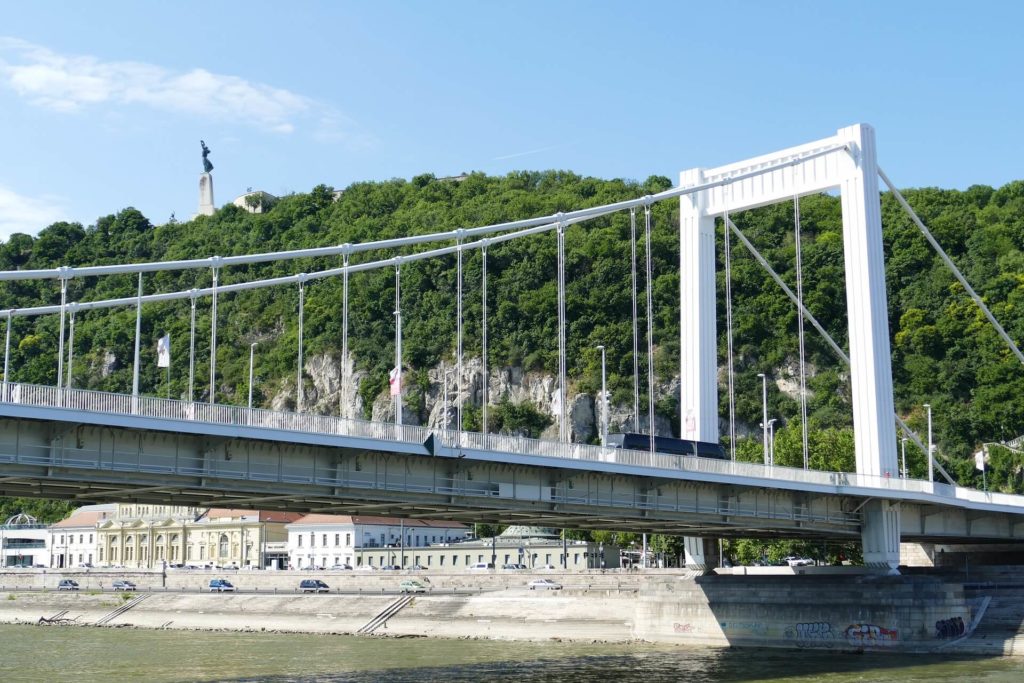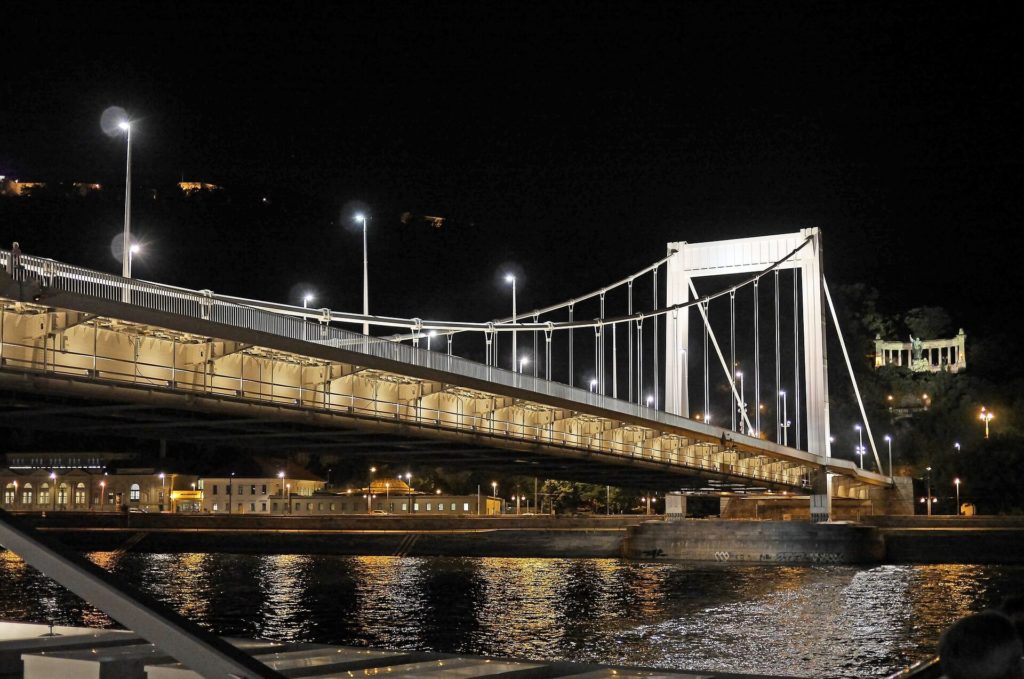Elisabeth Bridge (Erzsébet Híd) in Budapest

The iconic Elisabeth Bridge, named after Elisabeth of Bavaria, a beloved queen and empress of Austria-Hungary who tragically lost her life in an assassination in 1898. A large bronze statue commemorating her now resides in a quaint garden on the Buda side of the bridge, symbolizing her enduring connection to the area.
The bridge, with its rich history and stunning architecture, has become a symbol of the city’s beauty and grandeur. In this article, we will take a deep dive into the story of Elisabeth Bridge, from its original construction to its reconstruction after the devastation of World War II. Join us as we explore the unique features, historical significance, and cultural importance of this magnificent structure.
Brief Information
Location: The Elisabeth Bridge connects the Buda and Pest sides of Budapest, spanning the Danube River between the Gellért Hill and the March 15th Square.
Name: The bridge is named after Queen Elisabeth, the wife of Franz Joseph, a beloved queen of Hungary who was assassinated in 1898.
Initial Construction: The original bridge was constructed between 1897 and 1903 as a chain bridge with a suspended middle span.
Design: The current design is a cable-stayed bridge. It’s an all-white structure that gives it a graceful and elegant appearance.
Destruction: The original bridge was destroyed by German troops during World War II, in 1945.
Reconstruction: The Elisabeth Bridge is the only Danube bridge in Budapest that was not reconstructed in its original form. The current bridge was built in a different style and opened in 1964.
Length: The bridge is approximately 290 meters long.
Width: The bridge’s width is around 27 meters.
Unique Feature: The Elisabeth Bridge is the only suspension bridge in Budapest and is the city’s third newest bridge.
Lighting: The bridge is beautifully illuminated at night, making it a prominent feature of the Budapest skyline.

A Bridge of Ambition
The construction of Elisabeth Bridge began in 1897, following an international design competition. Out of 74 design concepts, the winning plans were submitted by German engineer Julius Kubler and his architect colleagues Eisenlohr and Weigle. However, their original draft for a suspension bridge could not be realized using Hungarian materials, leading to the development of new plans.
The Original Structure
When completed in 1903, Elisabeth Bridge stood as the longest suspension bridge in the world, with a single 290-meter span stretching over the Danube River. The bridge’s eclectic style and Art Nouveau elements added to its architectural charm. It featured four lanes for public traffic, connecting the bustling Pest to the romantic Buda. The middle span of the bridge, supported by pillars placed on the river bank, made it a remarkable engineering feat at the time.

Unforeseen Challenges
Shortly after the bridge’s completion, an unexpected incident occurred in 1902. A 33-millimeter slip of the main-chain mountings was noticed at the Buda end, leading to the suspension of construction. Extensive investigations revealed that the slips were caused by the heating effect of Gellert Hill’s thermal springs. To prevent further slips, 17-meter tall socle-like stone buildings were constructed at both ends of the bridge, providing additional support.
Destruction and Devastation
Tragically, Elisabeth Bridge, along with many other Budapest bridges, was blown up by German troops at the end of World War II on January 18, 1945. The explosion caused the pylon to contort and deform, leaving the bridge in ruins. Only the pylon and the riverside span on the Pest side remained, serving as a haunting reminder of the city’s past.

The Rebirth of Elisabeth Bridge
After nearly two decades of absence, a new Elisabeth Bridge was built between 1960 and 1964. The bridge’s reconstruction was a testament to the city’s resilience and determination to preserve its historic landmarks. Architect Pal Savoly designed the new suspension bridge, combining modern lines with the original pillars. The new bridge closely resembled its predecessor, with the only noticeable difference being the addition of pavements to the edges.
Commemorating the Reconstruction
To commemorate the reconstruction of Elisabeth Bridge, two identical plaques were placed at the southern part of the pillars in Pest and Buda. These plaques bear a powerful message, reminding visitors of the bridge’s historical significance and the unity of the Hungarian people in the face of destruction. They serve as a testament to the living will and peaceful, creating labors of the nation.
The Elisabeth Bridge Experience
Today, Elisabeth Bridge stands as the most elegant bridge in Budapest. Its charming shape and snow-white color make it a captivating sight for tourists and locals alike. At its Pest end, the Marcius 15-e Square showcases the city’s oldest church and the renowned restaurant “Matyas Pince.” A short walk from there leads to the M3 station “Ferenciek tere,” allowing visitors easy access to other parts of the city.
FAQs
What is the Elisabeth Bridge in Budapest?
The Elisabeth Bridge is a famous suspension bridge that spans the River Danube in Budapest, Hungary. Named after Bavarian Queen - Elisabeth, it's a prominent landmark connecting the Buda and Pest sides of the city.
Where is the Elisabeth Bridge located?
The Elisabeth Bridge is located in the heart of Budapest, connecting the base of the Gellért Hill on the Buda side with the March 15th Square on the Pest side, across the River Danube.
What is unique about the design of the Elisabeth Bridge?
Unlike other bridges in Budapest that were rebuilt in their original forms after World War II, the Elisabeth Bridge was constructed in a new style. It's a cable-stayed bridge design with an all-white structure, making it unique and easily recognizable.
Can pedestrians cross the Elisabeth Bridge?
Yes, pedestrians can cross the Elisabeth Bridge. It offers sidewalks on both sides and provides stunning views of the River Danube and surrounding cityscape.
Is the Elisabeth Bridge lit up at night?
Yes, the Elisabeth Bridge is beautifully illuminated at night. Its all-white structure makes the bridge particularly striking against the night sky.
How long is the Elisabeth Bridge?
The Elisabeth Bridge is approximately 290 meters long.
